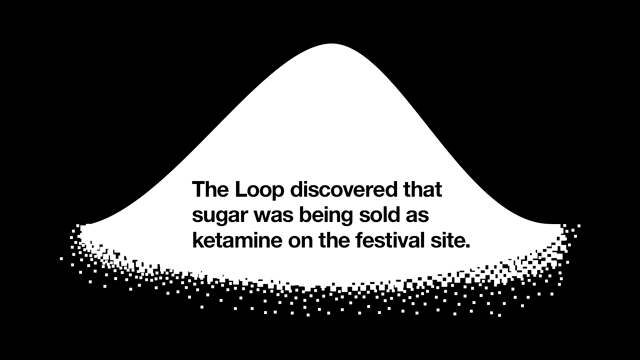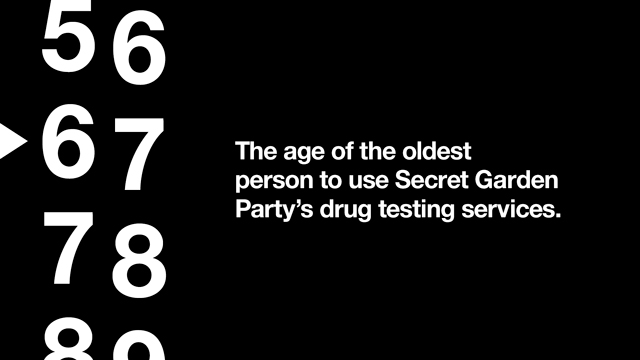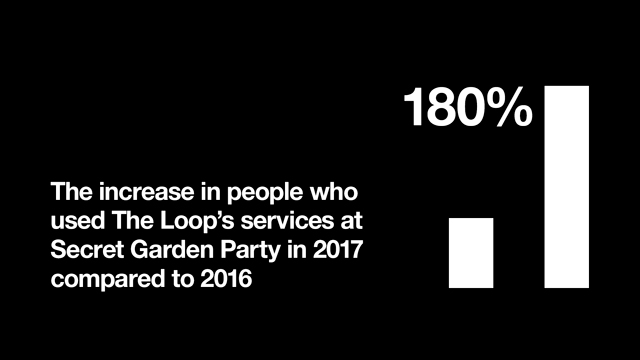This article is part of “Safe Sesh”, a VICE harm reduction campaign produced in collaboration with The Loop and the Royal Society for Public Health. Read more from the editorial series here.
Drugs, for many people, are a fairly integral part of the festival experience. Some come prepared, smuggling pills and powders through the gates in socks and tampon boxes, but some don’t. Some buy onsite, which presents a problem: say you buy a few pills directly out of a stranger’s Mulberry shotter bag, you don’t know if what you’ve bought are duds, or just absolutely crammed full of MDMA – a product of European drug manufacturers’ ecstasy-strength arms race, and obviously more dangerous than a pill of average strength.
Videos by VICE
However, if you’re at a festival where drugs welfare organisation The Loop has one of its testing tents, you can go and get your drugs (bought offsite or on) checked without any fear of getting in trouble. And you should, because you’ll then have useful information about purity, strength and any adulterants present that allows you to take those drugs in the safest possible way.
This past weekend The Loop were at Secret Garden Party for the second year running.
“About nine in ten [people who used The Loop’s services] actually got the drug they thought they did; about one in ten, it wasn’t what they thought it was,” says Fiona Measham, co-founder of The Loop, over the phone. “In terms of the types of drugs admitted, about 60 percent of the sample was ecstasy – half pills, half MDMA powder – and then the rest cocaine, ketamine and other drugs.”

Strength varied for the MDMA and ecstasy, from “sort of average dosages to very strong dosages of over 250mg”, but purity-wise there wasn’t a lot to worry about; manufacturers and dealers clearly don’t seem to be rushing to cut their product with any nasty stuff at the moment.
For cocaine, it’s a different story: Fiona says a number of samples of what people believed were cocaine were in fact chloroquine, an anti-malaria medication whose side effects include muscle problems, skin rashes and diarrhoea, and in serious cases muscle damage, seizures and problems with vision. Strangely, dealers weren’t just selling the crushed up medication by itself, but also adulterating the classic cocaine adulterant. “The chloroquine had quite a lot of other filler substances in it, which we’re a little bit puzzled by,” says Fiona, “so we need to do some more tests on that.”
As for ketamine, none of the samples tested contained any dodgy stuff, but some just didn’t contain any K whatsoever. “Sugar was being miss-sold as ketamine onsite, and that’s partly because ketamine is quite granular, so if you grind it up a bit it gives a crystallised appearance, like ketamine,” says Fiona. “Obviously that’s not a health concern, just annoying for people as they’ve bought sugar.”

A few other take-aways: the people using The Loop’s service ranged in age from 16 to 67, illustrating the fact that sesh-heads of all ages can be responsible. Mind you, the majority of people checking in with The Loop were aged between 18 to 30. Fiona says they also saw a massive uptick in people using the service this year – 720, compared to last year’s 249 – which can only be a good thing.
Anecdotally, according to Fiona, the festival’s welfare services have fewer issues this year than last. “We’re trying to get some figures on that,” she says, “but they were really adamant that it was because of our service that the problems onsite were significantly reduced.”
“Interestingly, 46 percent had already tried the drug before dropping them off for testing,” says Fiona, “so rather than looking for validation or confirmation of drugs that they’re planning to take, they had already taken them and were concerned, tense and were coming to see us. People think that we just test the drugs before people take them, but [we’re also there to provide] drug information after people have taken them, if it’s a substance of concern that they want to find more information about. So that was heartening for us.”

Importantly, when people found out that they had what they thought they had, and that it was high in purity and strength, the majority said they were going to take smaller amounts – a simple and effective harm reduction technique.
Of course, once people have gone, they’ve gone, so of their 720 respondents, The Loop have taken 100 email addresses and will be following up with people to see if they stuck to what they said they’d stick to. “That’ll be really valuable information to help gauge the success of the service – to evaluate in terms of longer term behaviour change,” says Fiona. “Also, it’ll be helpful in terms of people knowing that we’re not part of some big police operation, but that it’s a genuine academic study, and that evaluating the service is a really important part of it.”
See more from The Loop on their website.
More from our Safe Sesh editorial series:
Inside the One UK Lab Testing What’s Really in Your Drugs
More
From VICE
-

Photo: Cabezonication / Getty Images -

Photo: peepo / Getty Images -

WWE/WWE via Getty Images -

SpongeBob crossover content in The Sims 4
